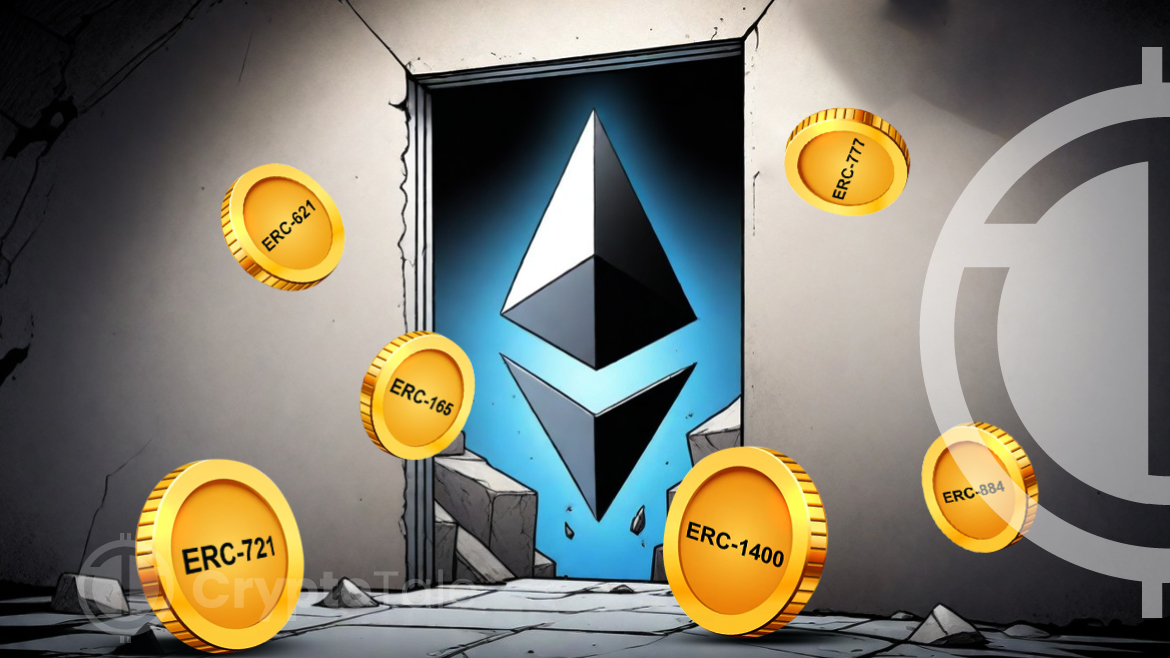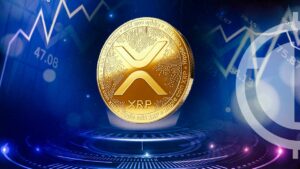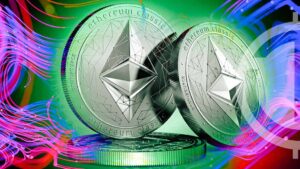
In the fast-paced world of crypto, Ethereum is a popular blockchain network. At the core of Ethereum’s functionality lie its ERC token standards, which facilitate the creation of decentralized applications. Startups planning to develop a dApp on the Ethereum network need to understand the various ERC tokens. This article will narrate the top ERC token standards.
What Are ERC Token Standards?
ERC, or Ethereum Request for Comment, offers guidelines for the creation and implementation of smart contracts, Ethereum tokens, and decentralized applications. Furthermore, interoperability and compatibility between applications and other entities can only be ensured by adhering to the rules established by ERC. The rules include smart contract security, token transfer function, and token ownership.
Top ERC Token Standards in 2024
1. ERC – 20
ERC-20 stands out as Ethereum’s most popular and widely adopted ERC standard for developing tokens. The token standard was introduced in 2017 and quickly gained traction due to its fungibility feature, allowing tokens to be easily interchanged and traded at equivalent values. It has a set of predefined rules and regulations and facilitates seamless interaction among tokens across different platforms like dApps and exchanges. Furthermore, the ERC-20 standard can tokenize real-world assets.
When developing the ERC-20 standard, it is important to define token functions like token supply, symbol, decimal value, and other features. These tokens have diverse applications, such as security tokens, utility tokens, and others. Most startups opt for the ERC-20 token standard because it offers ease of fundraising during the initial coin offering.
2. ERC – 777
With ERC-20 as its background, ERC-777 emerges as an advanced token standard that enhances token functionality and streamlines the development process. Its key features, “send” and “receive hooks,” allow developers to incorporate additional specifications on how and to whom the tokens should be transferred, thereby optimizing efficiency and reducing costs. Unlike ERC-20 tokens, which often incur high transaction fees and lengthy processing times, ERC-777 offers easier and more economical transfers.
With its blend of enhanced capabilities and backward compatibility with ERC-20, ERC-777 ensures seamless integration across exchanges and decentralized applications (dApps) while unlocking new possibilities, such as automated token swaps and refined token management.
3. ERC – 223
ERC-223 is a token standard designed to solve the token loss issue encountered with the ERC-20 standard. In the ERC-20 standard, if tokens are sent to a smart contract that cannot handle them, they are irretrievably burned, leading to permanent loss.
The ERC-223 standard introduces a transfer mechanism enabling smart contracts to manage incoming tokens by either accepting or rejecting them. If a smart contract is unable to handle the tokens, the transfer is automatically canceled, increasing the overall security of token transfers on the Ethereum network.
4. ERC – 1400
ERC-1400 is a security token standard renowned for its robust security measures and regulatory compliance. It was specifically tailored for creating, issuing, and trading security tokens, with each token equipped with built-in regulatory compliance functionalities, including document management. The token takes the strengths of both ERC-20 and ERC-721 and incorporates features like transfer restrictions, facilitating the tokenization of real-world assets such as real estate, art, and equities.
Through integration with both new and existing token standards, ERC-1400 fosters a collaborative framework for all security tokens, empowering developers to navigate and fulfill regulatory requirements effectively.
5. ERC – 721
Unlike ERC-20 tokens, which are interchangeable, ERC-721 standard tokens embrace indivisibility and uniqueness, catering to the realm of non-fungible tokens (NFTs). They are specifically tailored for digital assets, each ERC-721 token ensures that every NFT created possesses a distinct identifier within the Ethereum network.
These digital NFTs can represent a diverse range of items, including rare collectibles, real-world assets, and more. Some examples of NFTs include the Bored Ape Yacht Club, CryptoKitties, and others. These tokens mark a significant advancement in digital ownership and trading.
6. ERC – 1155
The ERC-1155 token standard combines features from both ERC-20 and ERC-721, enabling the creation of both fungible and non-fungible tokens within a single smart contract. This innovative approach reduces the number of transactions required for each token and provides developers with efficient and flexible management of different token types.
This versatile security token offers a range of functionalities without compromising on security, paving the way for diverse decentralized applications, gaming platforms, financial instruments, and more.
7. ERC – 4337
ERC-4337 is an important token standard as it introduces multi-signature wallets designed for fund management and executing high-value transactions. This token standard proves invaluable in scenarios where consent from multiple parties is necessary to solve ownership matters. By simplifying ownership models, the token facilitates complex transactions while ensuring security measures remain intact. Furthermore, ERC-4337 unlocks new avenues for governance mechanisms by enabling distributed decision-making within the blockchain framework.
8. ERC – 6551
ERC-6551 stands out as a token standard designed to address the demand for scalable transactions through innovative features such as bundling multiple transactions. This approach optimizes gas fees, reduces network congestion, and boosts the throughput capacity of decentralized applications. By combining the best functionalities of both ERC-20 and ERC-721, it finds applications in diverse sectors, including DeFi, gaming, and supply chain management. Moreover, this token standard facilitates seamless asset transfers across various blockchains, empowering users with greater control over their assets while promoting interoperability.
9. ERC – 512
ERC-512 introduces a standardized framework for digital identity management, offering decentralized solutions that reduce costs, enhance efficiency, and ensure security. This token standard empowers users to oversee their personal data, incorporating features such as tamper-proofing, credential revocation mechanisms, and verifiable claims. By adhering to this standard, the deployment of digital ID systems becomes more accessible and streamlined than ever before.
10. ERC – 4626
The ERC-4626 token standard aims to enhance communication between smart contracts and network nodes. By employing self-describing smart contracts, this token standard reduces complexity, enhances versatility, and improves readability. This enables developers to construct decentralized applications (dApps) from the ground up, facilitating seamless interaction with smart contracts and providing transparency for asset tracking.
Conclusion
The Ethereum token standards in 2024 present various options catering to the diverse requirements of a startup. As blockchain technology continues to evolve, the Ethereum network’s token standards continue to evolve with it, from the early ERC-20 to the intermediate ERC-1155 and the recent ERC-6551. The Ethereum token standards ecosystem offers a solid foundation for building next-generation decentralized systems.














